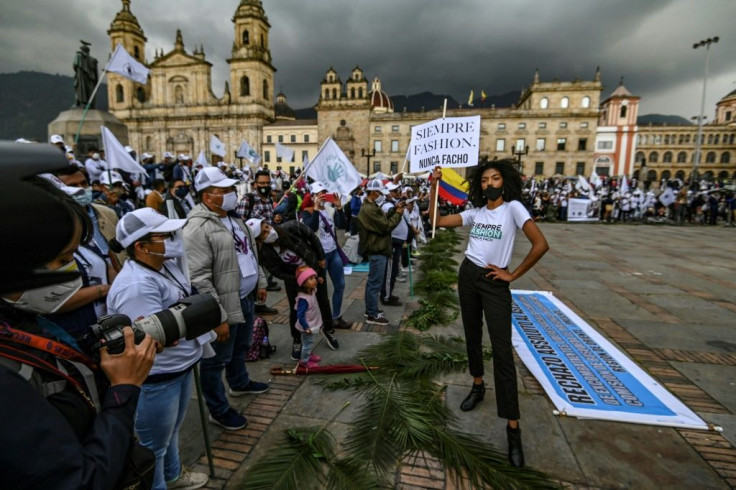Colombia's FARC Party To Change Blood-soaked Name
Colombia's FARC party said Thursday that it would change its name to move away from the acronym that identified the Marxist rebel force for decades.
On the heels of a 2016 peace accord, the Revolutionary Armed Forces of Colombia transitioned to a political party called the Common Alternative Revolutionary Force -- both of which went by FARC.
"It was complicated (for us) to keep the FARC name; not because we regret it, or it makes us ashamed of anything, but because it was as the FARC that we took part in armed conflict, in war," said Rodrigo Londono, leader of the leftist party, also known as Timochenko.
He acknowledged that "the conflict caused a lot of pain" and added that the name FARC is closely associated with bloodshed.
A new name is expected to be announced later this month, he added.

The former rebels have been divided since their disarmament.
Although the majority of some 13,000 former FARC combatants and militiamen accepted the peace agreement, dissident factions have kept up or retaken arms.
According to military intelligence, these groups number a total of around 2,500 rebels, with no unified command. They have stayed in isolated areas thanks to resources derived from drug trafficking and illegal mining.
Colombia continues to reckon with a conflict which, in nearly 60 years, has claimed more than nine million victims, tallying the dead, missing and displaced.
The violence has raged between the state and several insurgencies, including the FARC and the smaller National Liberation Army (ELN), which is still active, plus far-right paramilitaries.
© Copyright AFP {{Year}}. All rights reserved.





















